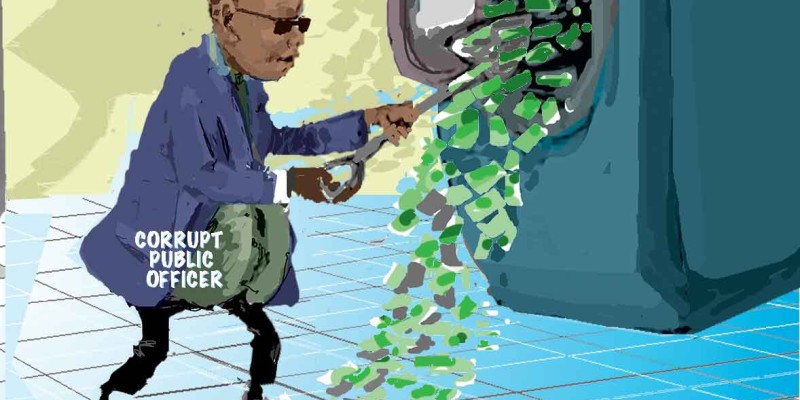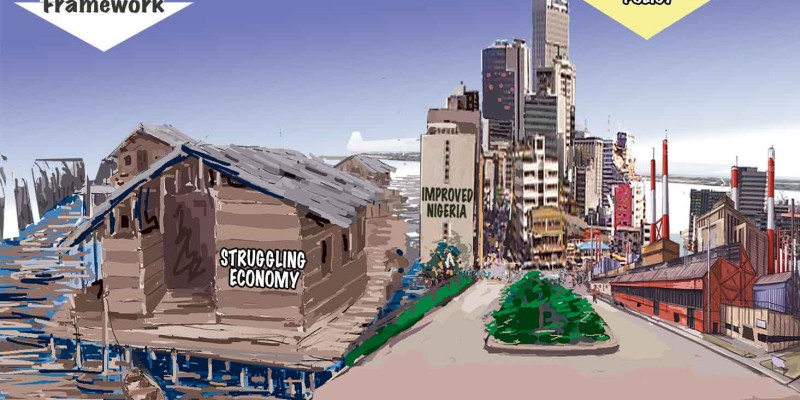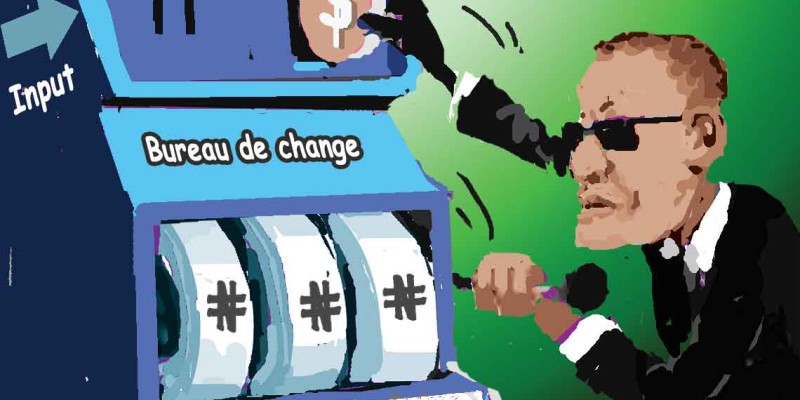Font size:
Print
CHEAPER BLACK MARKET DOLLAR
BY: LES LEBA (Email: llesleba@hotmail.com)
Websites: www.betternaijanow.com
In the wake of the recent Central Bank’s pseudo liberalization of dollar supply to the foreign exchange market, the rate of the naira tumbled from over N140=$1 to today’s rate of about N130=$1 in the black market, leaving a spread of just about N2 from the official rate. Ordinarily, this should confirm the success of ongoing economic reforms to eliminate multiple exchange rates and the attendant distortions in our national economy; but there may be some lessons to be learnt from a closer evaluation of how this apparent ‘magic’ has come about, given that the black market rate had never in the history of the naira suffered such a fall in so short a time.
In essence, the CBN has achieved this feat by bombarding the unofficial market with dollars from our surfeit dollar reserves! There have been undenied speculations that the Abacha regime managed to keep the black market and official rates at near parity by a constant flow of dollars into the black market from the junta’s liberal access to our dollars in the ‘unsafe’ custody of the CBN at that time. We recall the $700m or so allegedly kept by the son of the late Head of State in a private extension of the CBN! The current economic team may have borrowed a leaf from the Abacha precedent, but have successfully navigated Abacha’s illegality by publicly formalizing and legitimizing an open channel for funding the black market! To this end, the CBN has been supplying over 200 bureau de change $400,000 a week from the nation’s official dollar revenue. I do not know how many Bureaus De Change (BDCs) are registered, but suffice it to say that if there are only 100 BDCs, this would imply a direct funding of $40m a week. On the other hand, if there are 1000 BDCs, then this would be a funding of over $400m a week (or $1.6bn a month). Mark you, this amount does not include the usual stock of dollars sold directly to the commercial banks for onward sale to bona fide importers, industrialists or recognized international service providers (such as airlines) through the CBN’s wholesale dollar auctions.
The banks have now also been authorized to offer bureau the change services directly to their customers; it is not clear if each bank would receive only a weekly allocation of $400,000 for a single BDC licence or more likely an allocation of $400,000 for each branch where it offers a BDC service. If the latter is the case, then the earlier monthly projection of $1.6bn allocation to BDCs will most certainly be exceeded! Let us remind ourselves that BDCs worldwide serve an informal or itinerant market. There is no country in the world which directly funds its BDCs from its own Central Bank’s funds as a weekly ritual! The authorities in serious minded economies recognize the existence of a significantly different parallel rate of exchange as the result of a defect in official economic and monetary policy.
It may be pertinent at this stage to ask the question as to which purposes the $1.6bn monthly BDCs dollars is expected to be applied. Top of the list must be for travel expenses; other uses may be for overseas educational and medical expenses (even though under the current dispensation, bona fide students and patients with authentic documentation can still access their foreign exchange requirements from the daily purchases of dollars by banks in the wholesale dollar auctions). You may wonder that health and education cannot genuinely gulp up $1.6bn every month; so where will the bulk of this dollar value go? The answer most likely, would be for the importation of smuggled goods, which cannot be accommodated under the government’s import guidelines. The BDC allocation would also be a ready pool to facilitate capital flight by politicians and civil servants who have dipped their hands in the nation’s naira till!
If as is likely, the bulk of BDC dollar allocation is diverted for importation of banned goods or for siphoning away naira loot, then, the administration would have undermined stability and promoted distortion in our nation’s economy by its own making! The endangered species of small and medium industrialists may finally be swamped by smuggled, more competitive consumer goods funded with cheaper BDC dollars. The greater profit motivation in smuggling will test the integrity of our ‘officially’ impoverished civil service; particularly the customs services to the utmost and rob the nation of substantial import duty revenue. The unemployment level will rise as more factories close down, consumer demand will fall and the economy will further totter, but surprise, surprise, the banks will continue to declare huge profits that can only be a dream for any industry in the real sector as their heavy interest burdens continue to depress already battered margins.
For the above reasons, some analysts hold that our monetary authorities have misplaced their priorities. Some say that their approach to reducing the gap between the parallel market and official rate is akin to smashing a cockroach on a glass table with a sledge hammer! It can be argued that the problem is not the supply of the dollars to the market but the huge pool of naira in the money market every time the monthly conversion of the nation’s dollar revenue to naira is paid into the bank accounts of the three tiers of government.
The amount of the distributable naira can be expected to continue increasing as we begin to draw down our huge dollar reserves of over $30bn for domestic application in the critical areas of health, education, employment, etc; inadvertently, the increasing amount of naira provides an increasing larger pool for the acquisition of dollars from the BDCs. In other words, the more the naira shared every month, the greater the demand for dollars in the BDCs and the greater the distortions caused by smuggling and capital flight and the greater the downward pressure on the value of the naira.
It is interesting that the significant drop in the black market rate of the naira has not been reflected on the official rate which serves the needs of the real and formal sectors, whose prosperity impacts positively on other sectors of the economy. In view of the reality that our naira officially exchanged for N80=$1 with a paltry reserve base of less than $5bn in the Abacha years, we would expect under normal circumstances, that our embarrassingly huge dollar reserves should have given rise to a much stronger official naira exchange rate, such as N60=$1, so that the cost of imported vital industrial raw materials and machinery would have fallen by almost 50% with salutary effects on our economy; but inexplicably, the naira rate has defied basic economic principles by remaining resistant in the face of our increasing export dollar earnings.
We are fortunate to have ‘excess’ dollar reserves to support the dollar profligacy to BDCs for now, but what happens when the dollar income from crude oil is depleted? Presumably, we may need to borrow from our international friends, who have just fleeced $13bn from our tattered pockets to continue funding our BDCs!
SAVE THE NAIRA, SAVE NIGERIANS!








